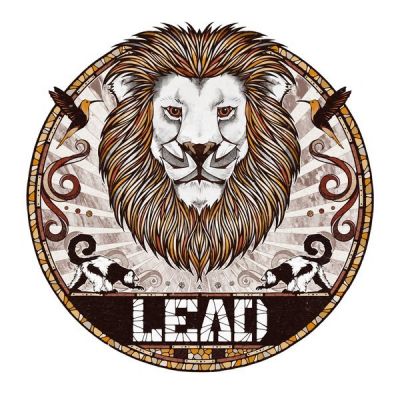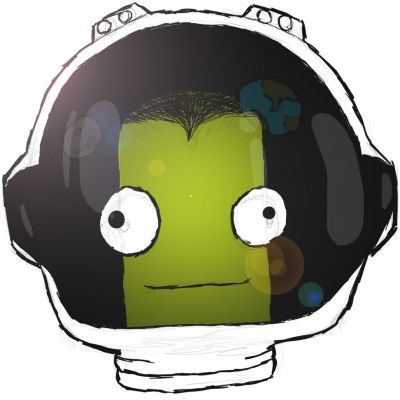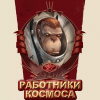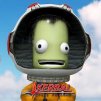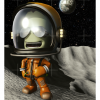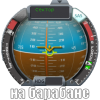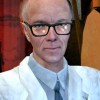Полный русификатор КСП
-
вот тут вот можно найти и скачать KSP Russian Patch v0.2
добавил:
Traits[ru_tr].cfg
Strategies[ru_tr].cfg
и несколько слов в ruLoadingTips.xml
там же можно найти deBody.txt в котором текст непонятно откуда.
а так же ждет перевод Departments[eng].cfg и Agents[eng].cfg
[attachment=17098]
[attachment=17099]
Сообщение отредактировал KiRiK 4 мая 2015 - 19:04Русификатор Kerbal Space Program
Коллективная русификация. Переведем КСП вместе!4 мая 2015 - 19:03 / #61 -
Не восстановить а забрать или что-то в этом роде, возвратить например.
KiRiK, скинь ссылку мне на имейл на прямой доступ к файлам, хочу помочь с переводом.
deBody.txt это описание небесных тел системы Кербола, кажется используются на карте.
4 мая 2015 - 19:39 / #62 -
4 мая 2015 - 19:43 / #63
-
Да транслит читается неплохо, но всё-таки нужно думать о полноценном переводе, искать костыли.
Названия оставить ради совместимости.
Сообщение отредактировал IDeXteRI 4 мая 2015 - 20:014 мая 2015 - 19:51 / #64 -
Тоже за то, чтобы название оставить нетронутыми. А по поводу костылей, как выше обсуждали - тут либо помощь Сквада (а они желанием не горят по своим причинам), либо Юнити Про (деньги или взлом). В обоих случаях перспективы крошечные.
Сообщение отредактировал Pes_Petya 4 мая 2015 - 20:164 мая 2015 - 20:15 / #65 -
IDeXteRI, Можно было бы сделать по-умному, на всяких сервисах... ноуже поздно, ибо основной массив текста переведен.
А зачем прямой доступ? Можно скачать файл в нем править, апотом скинуть мне, хоть прям сюда, под спойлер. Тексты не большие же.
Pes_Petya, То «фу-фу-фу транслит», то «ну ладно читается не плохо». Ай-ай-ай.
Для названий деталей есть пара задумок. Чуть позже.
Русификатор Kerbal Space Program
Коллективная русификация. Переведем КСП вместе!4 мая 2015 - 21:04 / #66 -
KiRiK, я, кстати, конкретно против транслита и не выступал ни разу. Наоборот, предложил сделать голосование, чтобы решило большинство. В любом случае, удачи в этом деле и заранее благодарности и все дела! Жаль с языками туго, так бы и сам с удовольствием помог.
4 мая 2015 - 21:23 / #67 -
Я так понял, переведено только то что на картинке сверху? Поставил обновление, больше ничего не нашёл.
Первая надпись поменялась на другую, а дальше только мигает но не меняется. :(
[attachment=17104]
И ещё одно. Нельзя ли кнопку переключения языка, влепить куда нибудь на видное место? Я её там заметил только случайно.
Сообщение отредактировал Наблюдатель 4 мая 2015 - 22:024 мая 2015 - 21:58 / #68 -
Я тут за картиночки интерфейсные взялся...
Две кнопки в научном центре, синяя и желтая технологии (дерево технологий?) и научный архив.
Не уверен можно ли ресет, но все же. В немецкой версии написано «neu — новый». Норм?
Про дроп зону тоже не уверен, но «сборочный узел дроп зона» ?
Правый нижний угол. Ctrl mode? Режим управления? Реж. упр.?
Крен, тангаж, рыскание.
Вправо — влево (право — лево?) вверх — вниз(верх—низ?).
Ступень.
Справа от навбола перегрузка? А слева тяга?
На вариометре — вертикальная скорость.
Кнопка, которая увозит аппарат в ксц, возвратить? Забрать? Вернуть? Спасти?!
Космический центр? ЦУП?
[attachment=17109]
кстати, ничо если я буду местами делать буквы больше чтобы текст был четче?
Наблюдатель, да я знаю, там надо придумать некоторые строки. некий научный юмор про запуск виртуально-реальной вселенной.
а где кнопка оказалась? у меня в настройках, под окном прячется.
Сообщение отредактировал KiRiK 4 мая 2015 - 22:41Русификатор Kerbal Space Program
Коллективная русификация. Переведем КСП вместе!4 мая 2015 - 22:39 / #69 -
KiRiK! У меня тоже прячется, поэтому и не заметил сразу.
Разрещение на мониторе 1280х1024, если это важно.
Можешь выложить архив со всем что надо исправлять (перевести, перерисовать, исправить и т.д.). Хочется тоже что-то сделать, но не знаю за что хвататься.
Сообщение отредактировал Наблюдатель 4 мая 2015 - 22:584 мая 2015 - 22:56 / #70 -
Наблюдатель, хм, эта кнопка создается плагином так что ничего не могу сделать.
все файлы можно найти тут
там осталось перевести Agents[eng].cfg и Departments[eng].cfg. потом deBody.txt, он на немецком. как сказал IDeXteRI это описание небесных тел системы Кербола, кажется используются на карте. нужно найти это текст на английском. в виде текста, или хотя бы скриншотами. останется только обработать науку, эще немного по мелочи и все!
Русификатор Kerbal Space Program
Коллективная русификация. Переведем КСП вместе!4 мая 2015 - 23:44 / #71 -
4 мая 2015 - 23:53 / #72
-
KiRiK, а настройки игры будешь переводить?
5 мая 2015 - 00:35 / #73 -
KiRiK писал:Не уверен можно ли ресет, но все же. В немецкой версии написано «neu — новый». Норм?Лучше бы "сброс" (он же резет)KiRiK писал:Про дроп зону тоже не уверен, но «сборочный узел дроп зона» ?"Подсборки кидать сюда" или "место для подсборок".Справа от навбола перегрузка? А слева тяга?Ага.На вариометре — вертикальная скорость."верт скор"Кнопка, которая увозит аппарат в ксц, возвратить? Забрать? Вернуть? Спасти?!Лучше всего подходит "эвакуировать", но длинно... Ну пусть "вернуть" или "вернуть в КЦ".Космический центр? ЦУП?Космоцентр, ну или полностью "Космический Центр".KiRiK писал:кстати, ничо если я буду местами делать буквы больше чтобы текст был четче?Имхо лучше бы не менять, чтобы глаз не резало своим выпиранием... Но на твой выбор.
Удачи в этом нужном деле. :)
(эх, ну нет тут этого нужнейшего смайла, нету...)
5 мая 2015 - 01:09 / #74 -
Можно слова сокращать без точек, так будет выглядеть техничнее
и никто не поймёт.
По поводу recover и subassemblies. Гуго транслятор мне выдал интересные результаты, а именно "извлечь" и "узлы". Можно оттолкнуться.
Сообщение отредактировал Nt0G 5 мая 2015 - 01:20"Что за флудилку вы тут устроили?" © Artyomka15, примерно 2014 г.
Прошу присудить мне премию "Скоростной набиратель текста мышкой по экранной клавиатуре 2016".5 мая 2015 - 01:19 / #75 -
KiRiK, перевел еще один файл, забирай.
https://drive.google.com/file/d/0B3Zwg7jrLtaPWDBucHh0eHQ1dU0/view?usp=sharing
Русские символы отображаются знаками вопроса, но при открытии все ОК.
5 мая 2015 - 12:45 / #76 -
Две кнопки в научном центре, синяя и желтая технологии (дерево технологий?) и научный архив
"Технологии" и "Научный архив"
Про дроп зону тоже не уверен, но «сборочный узел дроп зона» ?
"Склад неполных сборок", "Частично собранные узлы" (без управляющего модуля)
Фраза "без управляющего модуля" пусть выскакивает при наведении мыши, если это тоже возможно перевести.
Вправо — влево (право — лево?) вверх — вниз(верх—низ?).
Вправо, влево, вверх, вниз.
Кнопка, которая увозит аппарат в ксц, возвратить? Забрать? Вернуть? Спасти?!
Эвакуация. Что "эвакуировать" что "вернуть в КЦ", длина одинаковая.
кстати, ничо если я буду местами делать буквы больше чтобы текст был четче?
Только если текст слишком мелкий. А в главном меню, по моему перебор, Режет глаза. И не надо жирными делать, мне кажется.------------------------------------------------------------------------------------------------------------------------------------------------------Я тут переписал на английский язык то что было на немецком. Я взял текст с картинок, пропустил через "ScreenShot Reader" а потом вычитал что бы не было ошибок. Пытался это перевести, но большая часть получалась нечитабельной, поэтому я бросил. Вот текст на английском:
Тут вот есть ещё текст (в виде картинок) про астероиды, на всякий случай. Где-то же оно должно быть.
Сообщение отредактировал Наблюдатель 6 мая 2015 - 14:255 мая 2015 - 14:47 / #77 -
Трада-дам!

Выпустил версию 0.3. взять можно по той же ссылке(смотрите в шапке).
Изменения:
Нафотошопил перевод картиночек интерфейса. Подробности ниже.
Добавил Departments[ru_tr].cfg
Добавил ruSpaceCenter.xml
Доделал ruLoadingTips.xml
Добавил crewReport[ru_tr].cfg
Добавил ScienceContainer[ru_tr].cfg
Добавил stuff[ru_tr].cfg
С последними тремя могут быть не стыковки, ибо я не знаю, при какой ситуации выдается этот текст. Нужно тестить.
Касательно картинок. Там есть такой фокус, что в настройках должно стоять фулл рес. Иначе картиночки ужимаются и размыливаются, т.к. игра воспринимает их как сторонние текстуры.
Да я знаю что кое где не переведено. Кое где текст мелкий, расплылся и не виден. Но у меня уже есть пару идей, работаю над этим.
Nt0G,исправлением своего переводика деталек займусь позже, ибо ошибки не критичны.
Jockey152,спасибо, добавил. Только откуда текст? Он же не совсем тот.
Наблюдатель,чутка опоздали. Главное меню работает через плагин. Попробуйте покрутить размер шрифта. Для этого откройте блокнотом файл GameDataKSP Russian Patchxml uMenu.xml. там в каждой строке есть параметр size="17".Меняйте так, как вам нравится.
tarasspirit,настройки пока перевести нельзя.
Осталось немного:
Перевести Agents[eng].cfg
Выдрать текст и перевести Body.xml
Поправить науку
Поправить перевод деталей
Внести дословный перевод деталей (если его кто то сделает)
Далее будет РЕЛИЗ! *дабум-тссс* мы догнали немецкую локализацию. Нужно будет подготовить новость на сайтик. Новость разместить в библиотеке или еще где повыше, т.к. судя по тому, что периодически появляются чьи-то переводы, то этот перевод не все видят и не все знают, что он есть.
мы догнали немецкую локализацию. Нужно будет подготовить новость на сайтик. Новость разместить в библиотеке или еще где повыше, т.к. судя по тому, что периодически появляются чьи-то переводы, то этот перевод не все видят и не все знают, что он есть.
После релиза следует заняться контрактами. Основная сложность в том, что контракты генерируются из кусков текста.
Русификатор Kerbal Space Program
Коллективная русификация. Переведем КСП вместе!5 мая 2015 - 23:03 / #78 -
KiRiK, при дословном переводе получается бредово. Но главную мысль, имена и юмор я сохранил.
6 мая 2015 - 14:18 / #79 -
добавил для перевода enBody.txt
Jockey152, я не о том, текст который вы перевели, вы явно выдрали из игры. НО локализация не заменяет оригинальные файлы, а работает с помощью модуль менеджера, через вот такой шаблон:
@STRATEGY_DEPARTMENT[]
{
@name =
@desc =
}
то есть мне пришлось делать контл-ц, контр-в. хотя надо было всего то взять готовый файл вот отсюда. и перевести то, что там есть.
Русификатор Kerbal Space Program
Коллективная русификация. Переведем КСП вместе!6 мая 2015 - 14:48 / #80
Статистика форума, пользователей онлайн: 0 (за последние 10 минут)
Администраторы | Модераторы | Хорошие люди | Посетители | Новичок
Hello there!
Дорогой Гость, чат доступен только для зарегистрированных пользователей.
Последние комментарии
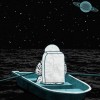

Последние сообщения с форума

Нашли ошибку?
Вы можете сообщить об этом администрации.
Выделив текст нажмите Ctrl+Alt
